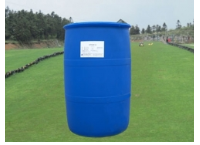In the washing process of textile processing, some processes should not only consider the washing effect, but also consider the softness and fading of the fabric. Therefore, the development of new surfactants with good washing effect and maintaining the softness and color stability of the fabric has become a hot spot in the research and development of new surfactants.
The commonly used surfactants are coupling agents, high-grade fatty acids and their salts, unsaturated organic acids and organosilicon. Coupling agent is a common mineral surfactant.

Crystal caking refers to the phenomenon that crystal changes from loose state to lump. Agglomeration makes the fluidity of crystal particles worse, which directly affects the performance of products. In the process of product crystallization, adding a small amount of surfactant to the solution can effectively prevent the product from caking.
The mechanism is as follows: ① the surfactant enters into the crystallization system and forms a wrapping film on the crystal surface, which results in the mechanical isolation effect between the grains; ② the hydrophobic layer adsorbed on the crystal surface prevents the water exchange between the crystal and the atmosphere; ③ the surface tension of the solution is reduced, the interface contact angle between the solid and the liquid is changed, which results in the decrease of the adsorption force of the crystal on the solution's capillary; ④ the surfactant participates in the crystal production process, Change the relative growth rate of each crystal surface, improve the crystal habit of particles, reduce the crystal interface energy, and change the crystal shape. For example, alkylsulfonate and its intermediates, such as alkylsulfonyl chloride, alkylbenzene sulfonate, sodium p-toluenesulfonate and sodium fatty acid, can be used as anti caking agents for crystal products.
In solution, surfactant molecules migrate to the surface of the solvent, reducing the surface tension (of water or other solvents). When the surfactant is oriented, the polar group is directly toward the surface of the solvent, and the hydrocarbon chain extends into the air. This distribution makes the surface force balance, and then the surface tension decreases. When the surface tension decreases to the critical micelle concentration, the surfactant molecules are distributed on the solvent surface until the monolayer structure is formed. The phenomenon of surface tension helps to design effective ink. Because pigment coating process and these parameters have a lot to do. Many defects of the coloring layer can be attributed to surface tension.